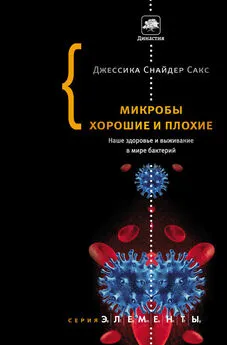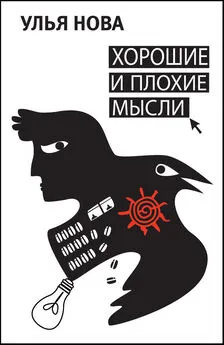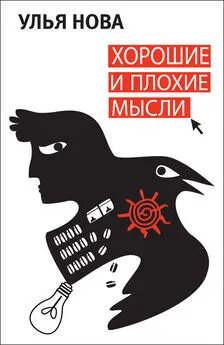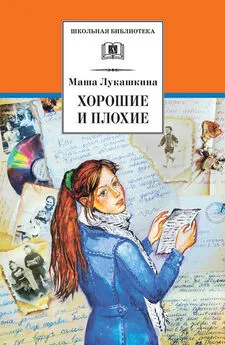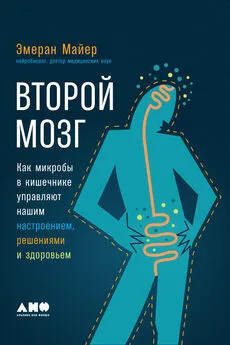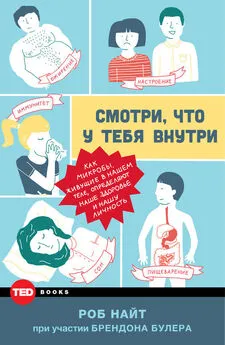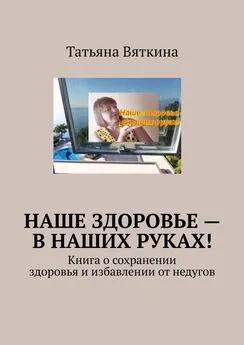Джессика Сакс - Микробы хорошие и плохие. Наше здоровье и выживание в мире бактерий
- Название:Микробы хорошие и плохие. Наше здоровье и выживание в мире бактерий
- Автор:
- Жанр:
- Издательство:Corpus
- Год:2015
- Город:Москва
- ISBN:978-5-17-093708-0
- Рейтинг:
- Избранное:Добавить в избранное
-
Отзывы:
-
Ваша оценка:
Джессика Сакс - Микробы хорошие и плохие. Наше здоровье и выживание в мире бактерий краткое содержание
Рассказывая о том, что в нашей войне с микробами пошло совсем не так, как надо, Джессика Снайдер Сакс раскрывает перед читателями складывающиеся сегодня представления о симбиотических отношениях человеческого организма и населяющих его микробов, число которых, кстати, превосходит число наших собственных клеток в девять раз! Кроме того, автор этой книги подает нам надежду на то, что в будущем люди научатся создавать и использовать антибиотики более благоразумно, и даже на то, что когда-нибудь мы сможем заменить противо-бактериальные и дезинфицирующие средства бактериальными, каждое из которых будет специально разработано так, чтобы обеспечивать наилучшую заботу о нашем здоровье.
Микробы хорошие и плохие. Наше здоровье и выживание в мире бактерий - читать онлайн бесплатно полную версию (весь текст целиком)
Интервал:
Закладка:
45 Эта жизненно важная игра в “покажи и расскажи”происходит в основном в лимфатических узлах – этих сгустках специализированной иммунной ткани, в буквальном смысле распухающих от бурной деятельности во время инфекции.
46 R. Maldonado-Lopez et al., “CD8 Subclasses of Dendritic Cells Direct the Development of Distinct T Helper Cells In Vivo”, Journal of Experimental Medicine 189 (1999), 587–592.
47 Akiko Iwasaki, Ruslan Medzhitov, “Toll-like Receptor Control of the Adaptive Immune Responses”, Nature Immunology 5 (2004), 987–995.
48 Daniel Hawiger et al., “Dendritic Cells Induce Peripheral T-cell Unresponsiveness Under Steady State Conditions In Vivo”, Journal of Experimental Medicine 194 (2001), 769–779.
49 Ralph Steinman et al., “Tolerogenic Dendritic Cells”, Annual Review of Immunology 21 (2003), 685–711.
50 Ralph Steinman et al., “Dendritic Cells Function In Vivo During the Steady-State: A Role in Peripheral Tolerance”, Annals of the New York Academy of Sciences 987 (2003), 15–27.
51 Stock et al., “Induction of T Helper Type 1-like Regulatory Cells”.
52 Holden Maecker et al., “Vaccination with Allergin-IL-18 Fusion DNA Protects Against, and Reverses Established, Airway Hyperreactivity in a Murine Asthma Model”, Journal of Immunology 166 (2001), 959–965.
53 Braun-Fahrländer et al., “Environmental Exposure to Endotoxin”.
54 Waltraud Eder et al., “Toll-like Receptor 2 as a Major Gene for Asthma in Children of European Farmers”, Journal of Allergy and Clinical Immunology 113 (2004), 482–488.
55 John M. Grange, “Effective Vaccination Against Tuberculosis – A New Ray of Hope”, Clinical and Experimental Immunology 120 (2000), 232–234.
56 Christian Lienhardt, Alimuddin Zumla, “BCG: The Story Continues”, Lancet 366 (2005), 1414–1416.
57 G. M. Bahr et al., “Two Potential Improvements to BCG and Their Effect on Skin Test Reactivity in the Lebanon”, Tubercle 67 (1986), 205–216; John Stanford, “Improving on BCG”, Acta Pathologica, Microbiologica et Immunologica 99 (1991), 103–113.
58 G. D. Prema et al., “A Preliminary Report on the Immunotherapy of Psoriasis”, Indian Medical Gazette 124 (1990), 381–382.
59 G. B. Marks et al., “The Effect of Neonatal BCG Vaccination on Atopy and Asthma at Age 7 to 14 Years: An Historical Cohort Study in a Community with a Very Low Prevalence of Tuberculosis Infection and a High Prevalence of Atopic Disease”, Journal of Allergy and Clinical Immunology 111 (2003), 541–549; C. B. Saanjeevi et al., “BCG Vaccination and GAD65 and IA-2 Autoantibodies in Auto-immune Diabetes in Southern India”, Annals of the New York Academy of Sciences 958 (2002), 293–296; Ramesh Bhonde and Pradeep Prab, “Can We Say Bye to BCG?” Current Science 77 (1999), 1283.
60 A. B. Alexandroff et al., “BCG Immunotherapy of Bladder Cancer: 20 Years On”, Lancet 9165 (1999), 1689–1694.
61 Судя по обзору медицинской литературы по состоянию на 1999 г., использование вакцины Коули обеспечивало уровень коэффициента выживаемости, сравнимый с тем, которого добивались онкологи, лечившие те же разновидности опухолей современными методами. Stephen Hoption Cann et al., “Dr. William Coley and Tumour Regression, a Place in History or in the Future”, Postgraduate Medicine 79 (2003), 672–680.
62 Mary Ann Richardson et al, “Coley Toxins Immunotherapy, a Retrospective Review”, Alternative Therapies in Health and Medicine 5 (1999), 42–47.
63 Аллергия и астма: L. Camporota et al., “Effects of Intradermal Injection of SRL 172 on Allergen-Induced Airway Responses and IL-5 Generation by PBMC in Asthma”, Respiratory and Critical Care Medicine 161 (2000); Peter Arkwright et al., “Intradermal Administration of a Killed Mycobacterium vaccae Suspension (SRL 172) Is Associated with Improvement in Atopic Dermatitis in Children with Moderate-to-Severe Disease”, Journal of Allergy and Clinical Immunology 107 (2001), 531–534; L. Camporota et al., “The Effects of Mycobacterium vaccae on Allergen-Induced Airway Responses in Atopic Asthma”, European Respiratory Journal 21 (2003), 287293. Рак: L. Assersohn et al, “A Randomised Pilot Study of SRL 172 (Mycobacterium vaccae) in Patients with Small Cell Lung Cancer Treated with Chemotherapy”, Clinical Oncology 14 (2002), 23–27; R. Mendes et al., “Clinical and Immunological Assessment of Mycobacterium vaccae (SRL 172) with Chemotherapy in Patients with Malignant Mesethelioma”, British Journal of Cancer 86 (2002), 336–341; S. Nicholson et al., “A Randomized Phase II Trials of SRL 172 (Mycobacterium vaccae) +/– Low-Dose Interleukin-2 in the Treatment of Metastatic Malignant Melanoma”, Melanoma Research 13 (2003), 389–393; A. Maraveyas et al., “Possible Improved Survival of Patients with Stage IV AJCC Melanoma Receiving SRL 172 Immunotherapy: Correlation with Induction of Increased Levels of Intracellular Interleukin-2 in Peripheral Blood Lymphocytes”, Annals of Oncology 10 (1999), 817–824; P. M. Patel et al., “An Evaluation of a Preparation of Mycobacterium vaccae (SRL172) as an Immunotherapeutic Agent in Renal Cancer”, European Journal of Cancer 44 (2008), 216–223.
64 The Dirt Vaccine (документальный фильм, показанный Би-би-си в 2002 г.), серия The Edge Series: Health and Medicine, Eco Services Film; Garry Hamilton, “Let Them Eat Dirt”, New Scientist, July 18, 1998; Susan McCarthy, “Talking Dirty and Bring on the Germs”, salon.com, April 2000.
65 Mary O’Brien et al., “SRL172 (Killed Mycobacterium vaccae) in Addition to Standard Chemotherapy Improves Quality of Life Without Affecting Survival, in Patients with Advanced Non-small-cell Lung Cancer: Phase III Results”, Annals of Oncology 15 (2004), 906–914.
66 John Stanford et al., “Successful Immunotherapy with Mycobacterium vaccae in the Treatment of Adenocarcinoma of the Lung”, European Journal of Cancer 44 (2008), 224–227.
67 11 апреля 2001 г. стоимость акций SR Pharma упала на 76,9 %. Это было самое сильное падение за этот день по данным индекса FTSE 100.
68 National Sweet Itch Centre, “Studies on the Prevention and Treatment of Sweet-Itch”, www.sweet-itch.co.uk/ trials.html.
69 Неопубликованные данные: John Stanford, Graham McIntyre (Centre for Infectious Diseases and International Health, University College London), 2006.
70 Claudia Zuany-Amorin et al., “Suppression of Airway Eosinophilia by Killed Mycobacterium vaccae-lnduced Allergen-Specific Regulatory T-cells”, Nature Medicine 8 (2002), 625–629; Victoria Adams et al., “Mycobacterium vaccae Induces a Population of Pulmonary CDiic (+) Cells with Regulatory Potential in Allergic Mice”, European Journal of Immunology 34 (2004), 631–638.
71 Неопубликованные данные: Graham Rook, 2006.
72 Fawziah Marra et al., “Does Antibiotic Exposure During Infancy Lead to Development of Asthma? A Systematic Review and Meta-analysis (of Seven Studies)”, Chest 129 (2006), 610–618.
73 Mairi Noverr et al., “Development of Allergic Airway Disease in Mice Following Antibiotic Therapy and Fungal Microbiota Increase: Role of Host Genetics, Antigen, and Interleukin-13”, Infection and Immunity 73 (2005), 30–38; Mairi Noverr, Gary Huffnagle, “Does the Microbiota Regulate Immune Responses Outside the Gut?” Trends in Microbiology 12 (2004), 562–568; Mairi Noverr, Gary Huffnagle, “Role of Antibiotics and Fungal Microbiota in Driving Pulmonary Allergic Responses”, Infection and Immunity 72 (2004), 4996–5003.
74 B. Laubereau et al., “Caesarean Section and Gastrointestinal Symptoms, Atopic Dermatitis, and Sensitisation During the First Year of Life”, Archives of Diseases of Children 89 (2004), 993–997.
75 A. C. Ouwehand et al., “Differences in Bifidobacterium Flora Composition in Allergic and Healthy Infants”, Journal of Allergy and Clinical Immunology 108 (2001), 144–145.
76 B. Björksten et al., “The Intestinal Microflora in Allergic Estonian and Swedish Infants”, Clinical and Experimental Allergy 29 (1999), 342346; E. Sepp et al., “Intestinal Microflora of Estonian and Swedish Infants”, Acta Paediatrica 86 (1997), 956–961.
77 Anita van den Biggelaar et al., “Long-Term Treatment of Intestinal Helminths In creases Mite Skin-Test Reactivity in Gabonese Schoolchildren”, Journal of Infectious Diseases 189 (2004), 892–900.
78 R. W. Summers et al., “Trichuris suis Therapy in Crohn’s Disease”, Gut 54 (2005), 87–90.
79 Charlotte Schubert, “The Worm Has Turned”, Nature Medicine 10 (2004), 1204–1271.
80 Christopher Lowry, “Functional Subsets of Serotonergic Neurones”, Journal of Neuroendocrinology 14 (2002), 911–923; Christopher
Lowry et al., “Modulation of Anxiety Circuits by Serotonergic Systems”, Stress 8 (2005), 233–246.
81 Rose-Marie Bluthe et al., “Central Injection of IL-10 Antagonizes the Behavioral Effects of Lipopolysaccharide in Rats”, Psychoneuroendocrinology 24 (1999), 301–311.
82 Marianne Wamboldt et al., “Familial Association Between Allergic Disorders and Depression in Adult Finnish Twins”, American Journal of Medical Genetics 96 (2000), 146–153.
83 M. Maes et al., “In Vitro Immunoregulatory Effects of Lithium in Healthy Volunteers”, Psychopharmacology 143 (1999), 401; Marta Kubera et al., “Anti-inflammatory Effects of Antidepressants Through Suppression of the Interferon-gamma / Interleukin-10 Production Ratio”, Journal of Clinical Psychopharmacology 21 (2001), 199–206; Brian Leonard, “The Immune System, Depression and the Action of Antidepressants”, Progress in Neuro-Psychopharmacology and Biological Psychiatry 25 (2001), 767–780; Sinead O’Brien et al.,
“Cytokines: Abnormalities in Major Depression and Implications for Pharmacological Treatment”, Human Psychopharmacology: Clinical and Experimental 19 (2004), 397–403; Nathalie Castanon et al., “Chronic Administration of Tianeptine Balances Lipopolysaccharide-Induced Expression of Cytokines in the Spleen and Hypothalamus of Rats”, Psychoneuroendocrinology 29 (2004), 778–790.
1 Эпиграф: Tom Nugent, “Resistance Fighter”, Pennsylvania Gazette, September – October 2000.
Читать дальшеИнтервал:
Закладка:
